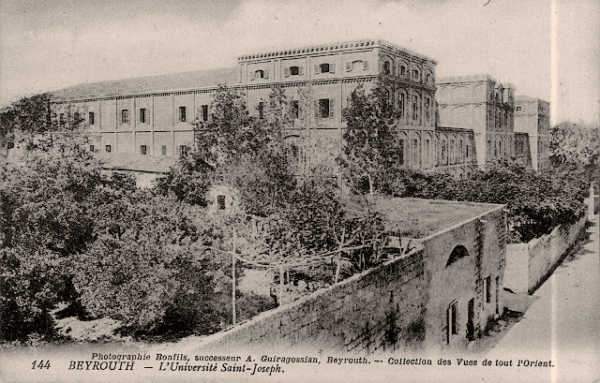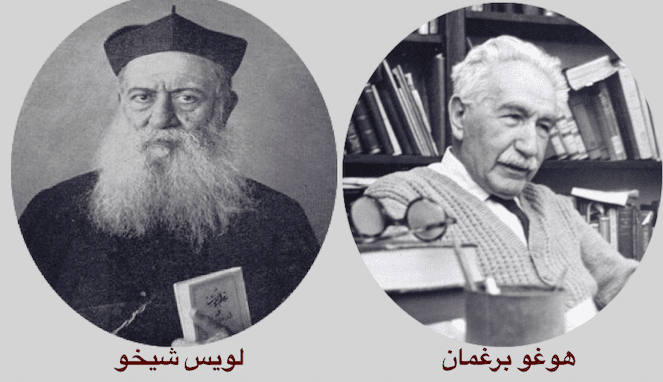|
إستماع
Getting your Trinity Audio player ready...
|
Hugo Bergman (1883-1975), Israeli philosopher, Born in Prague. He studied philosophy at the University of Prague and Berlin. In 1920, he immigrated to Palestine. Where he was appointed director of the National Library. Later he served as President of the Hebrew University in Jerusalem.اثhe
Exactly a century ago, In August 1925, He made a trip to Lebanon and Damascus in order to learn about the conditions in this region. He published this message that reveals to us the atmosphere of the areas he visited. It also presents a comparison with the conditions of Beirut and the Levant on the one hand, and the conditions of Palestine at that time.
It is clear from his words that he was amazed by what he saw in Lebanon, as he states that Lebanon at that time was a century ahead of the Land of Israel-Palestine.
And here we are now, a century after that journey, We can only say that the verse has now been reversed if we make a comparison between the situation of Israel and the situation of Lebanon and the Levant.
We present this message-journey to the Arab reader because of the interests of Zionist figures in the region and what it reveals of the atmosphere of a past and past.
*

Hugo Bergman | To Damascus
(trip message)
“It’s a strange thing, How little we know about the countries neighboring the Land of Israel. Most of us saw Egypt only by chance. Syria is almost unknown to us. But it’s worth seeing. I am not an expert on economic and market issues to judge whether the Land of Israel can one day be like Lebanon is at this time. These two countries, Seemingly, They are not different from each other, And yet they are. It seems as if Lebanon preceded us by a century.
When you travel here via Haifa, Beirut fascinates you: For an hour, the mobile phone drives between the mulberry forests. You see Lebanon, one village next to another. All the villages are built of brick in European style. white surfaces, And red, and there is an impression as if you are in Switzerland and not in the East. How clean are these villages? Summer retreats they truly are. Many of them have electricity. When you travel in the afternoon by mobile phone or mountain train to one of those villages and watch the sunset over the port of Beirut, You also see a long string of furniture lights trickling past each other from Beirut.
Most of my attention was focused on my university, Beirut. The first was Protestant and was established by Americans in 1866. The second was French Catholic, established by the Jesuits. I did not find them in their working hours. This was at the end of August, It’s vacation time. However, Something could be seen: The large area of the American University, with its many small buildings surrounding the lecture house. Students eat and live here. Down in front of the beach – a large tennis court all surrounded by beautiful gardens. The library, with its 20,000 books, is not very important; Our library in Jerusalem excels beyond measure. However, it is tidy and rich, and it has a beautiful reading room.

But the Jesuit University shows that the ancient traditions of the sages of Europe were brought to this distant spot by the Jesuits. The library is not large in terms of quantity of books. But it’s a perfect library. You can find here all major publishing houses for classic books in all scientific fields. It is what we lack in Jerusalem due to the lack of resources to acquire it. Complete series of scientific journals, large and expensive encyclopedias; The Palestinian section is very rich.
There is a special room containing all the books printed in the university’s Arabic printing press. Here also two university magazines are published: “ Mashreq ” in Arabic and “Mélanges” in French.
The French magazine constitutes a tube through which everything that appears again in the field of Orientalism passes. Everything new published in this field finds its way to this magazine. Dean of the library, The great Arab scholar, Louis SheikhoHe displays all its treasures before me. Here are hundreds of Arabic manuscripts that Sheikho acquired over fifty years from all over the Arab world. He is now working on publishing a list of manuscripts in his French magazine.
The activity carried out by the Jesuits here in Beirut is not merely a missionary policy. Rather, it is a major Arab cultural activity.
They heard here about our acquisition of the Goldziher Library for our Jerusalem library. Soon, a professor from there will come to work for us here.
A trip by mountain train throughout Lebanon and the Bekaa is an enchanting journey. The rooms on this train are clean and small, unlike the “halls” on the Palestinian train, into which passengers are placed in herds. Halfway between Beirut and Damascus is Rayak. There the French established the pilots’ camp. Rayak Air Base.
On the eighteenth of August, we arrived in Damascus. The situation in the city is stable. Just a lot of French soldiers, For your information, the majority of them are from the “Foreign Recruits Corps.” They remind of war. The hotels are full of visitors and summer tourists from Egypt. How beautiful the city looks as you supervise it from the Salhiya Cemetery. It is an incredible beauty; green, Greenery covers everything, An oasis in the desert in every sense of the word.
We came from Jerusalem, There is poverty and destitution and you barely have access to drinking waterHere, water flows in every corner. The Germans radically examined the artistic value of the city during the war. In this regard, we mention the book: “Damascus, the Islamic City,” written by Karl Woltsinger and Karl Watsinger, published by the German-Turkish Society for Heritage Preservation (Berlin, Walter Grueter, 1924). Knowing this book is extremely important and is an asset for every traveler.
A person coming from Palestine is not interested in the Eastern traditions of buying and selling in the city’s markets. Although it is larger and wider in size.

The Umayyad Mosque attracts attention first and foremost for its large halls and the fact that they are not only used for prayers. But because it performs social functions. In a corner, our view falls on five sites with groups of worshipers. But here and there we see other groups standing or lying on carpets, immersed in conversation among themselves.
The unique architecture of Damascus is reflected in domed buildings that have no connection to religion and multi-apartment buildings. The sights of large warehouses filled with goods also attract your attention. And the khan with its many domes, Witness to authority and greatness, In addition, there are functional buildings that were created to perform their practical function and fulfill a specific purpose. It reminds us of European stores, However, it lacks people. It contains only the goods: spices, minerals, Rugs – piled up in those big warehouses, Or we can say “mosques” because of their many domes… The caravanserai always faces inward. From the outside it can hardly be seen, Also hard to find.
This tendency towards the interior is also what distinguishes private homes. The house is proud of its spacious yard and water basin. This basin is called “Bahr” by the Arabs. As is the case in the name of the basin in the Temple of Solomon. On the outskirts of the square – three covered arcades to protect against the sun’s rays in the summer season. These corridors connect all the rooms. Each of them has drawers that are divided into paved interior sections covered with carpets. The walls are covered with wood and beautiful drawings. Arabic proverbs were inscribed on it, Or Hebrew – in the homes of Jews from the upper class – filling the space of the room. As for the most beautiful houses in Damascus, the French government acquired it and turned it into an archaeological museum.
We move to the Jewish Quarter. A boy guides us. He speaks broken Hebrew and fluent French. The situation of the Jews is miserable, They live between two conflicting parties, Christians and Muslims.
There is no one here who takes it upon himself to organize the youth. Many of them immigrate to America, Some of them went to the Land of Israel. When the big school established by the Zionists was here, the situation was much better. Because they learned Hebrew, the Land of Israel was closer to them. At this time, this school no longer exists.
The Hebrew school, which was established by the Education Committee, was closed some time ago due to lack of resources. Only when you stay here do you see with your own eyes the short-sightedness of this step. These young men who grow up in an Arab environment, They are members of the Ahl al-Bayt in the East. They could have educated a crowd of Zionist activists, and they would have built a bridge to the Mizrahi Jews and Arabs . The Zionist administration preferred to vacate the place to ” Alliance “. “It is easy to appreciate in what spirit the Alliance is raising the generations of our young people in this French-occupied country.”
September 18, 1925
On the other hand
*
Full text in Hebrew:



